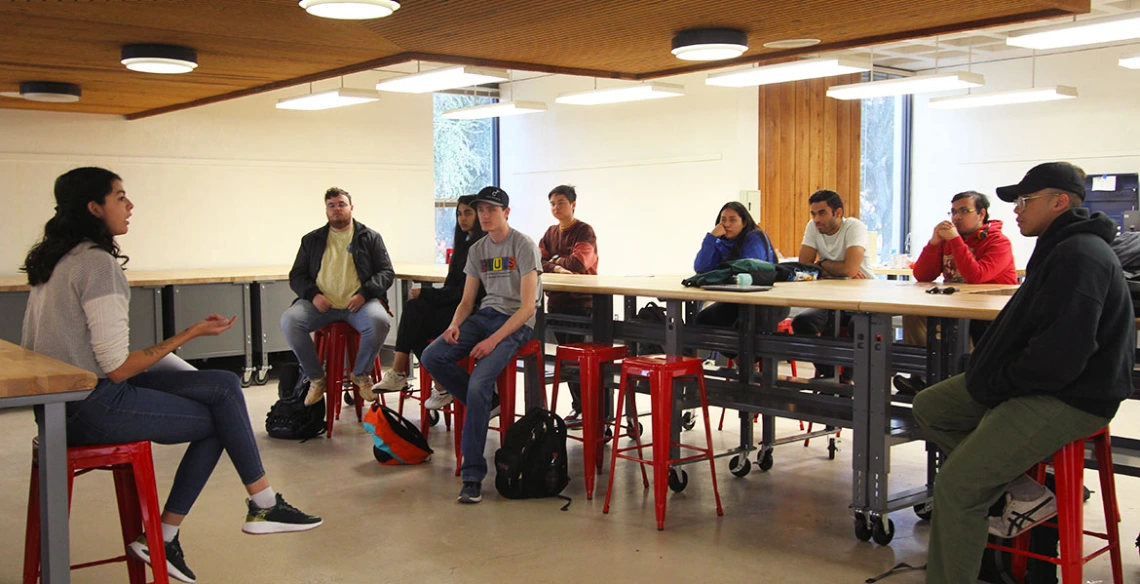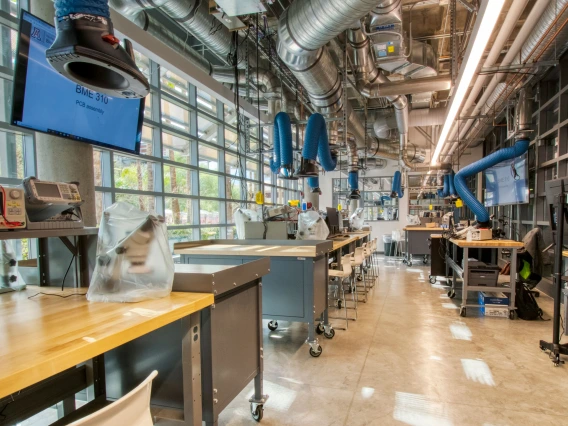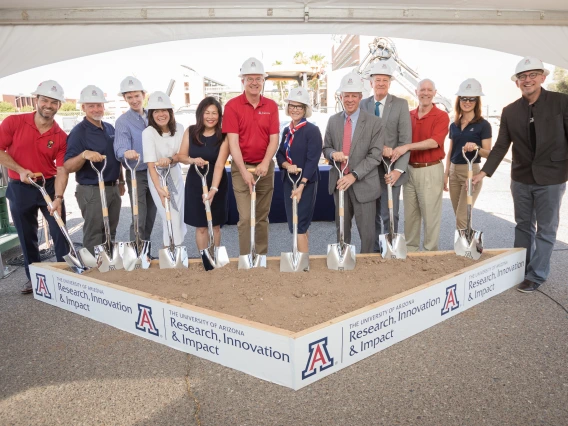First Collegewide Makerspace Opens
The Engineering Design Center is a precursor to the building that will serve as the college’s public face of engineering education.

Design technician Annissa Lopez, a senior majoring in environmental engineering, leads students in an orientation and safety training at the Engineering Design Center.
Something monumental is in store. Within the next few years, the 100,000 square foot Student Design and Innovation Center – 50% bigger than the Bear Down Building and with half the assignable footage of McKale Memorial Center – will become the public face of the College of Engineering.
The SDIC, prominently located on Speedway Boulevard, will provide collaborative classrooms and a student advising center, a home for student clubs and organizations, and building and design spaces for student projects in direct support of UA’s commitment to experiential learning.
In the meantime, while fundraising for the SDIC continues, engineering leaders have opened up a collegewide makerspace near the university’s Main Gate at Park Avenue and University Boulevard. The 5,000-square-foot Engineering Design Center opened Feb. 1.
The EDC fulfills important and immediate needs in support of the college’s commitment to experiential learning over all four years, said David W. Hahn, the Craig M. Berge Dean.
“All engineering students now have 24-hour access to a spacious, well-equipped, and safe place where they can collaborate and build. The Engineering Design Center is advancing the college’s goals to provide the facilities our students need to succeed in and out of the classroom,” Hahn said.
A Culture-Building First
Any engineering student can work on any project at the EDC, which also offers meeting spaces for clubs and a place for students to talk with potential employers. However, the biggest need is for seniors working on Interdisciplinary Capstone projects, said Larry Head, director of the Craig M. Berge Engineering Design Program.
“This is really the first open makerspace for students in the program. Capstone students are chomping at the bit to get in,” said Head just before the center opened.
After passing safety training, students can use equipment such as 3D printers, oscilloscopes and other electronics, and light machine tools. Annissa Lopez, a senior majoring in environmental engineering, is one of several design technicians hired to train fellow students to use the tools and to help them on an ongoing basis.
Lopez believes the EDC’s communal atmosphere will build confidence and proficiency.
“Maybe students won’t feel lost if they’re doing a project,” she said. “If they’re going to solder a piece of equipment that’s maybe too small or difficult or their hands are too shaky, they won’t feel trapped. They can just go to the person next to them, or one of us.”
Head emphasized the importance of access to high-quality equipment in the four-year design experience offered by the Craig M. Berge program.
“We want to create a culture of students being practical and able to build their designs, do testing, fail and try again. A lot is learned from iterating on designs,” he said.
Funding for the EDC’s equipment and three-year lease came from TRIF, the Technology and Research Initiative Fund, which is overseen by Research, Innovation and Impact at the University of Arizona, in support of engineering workforce development.



